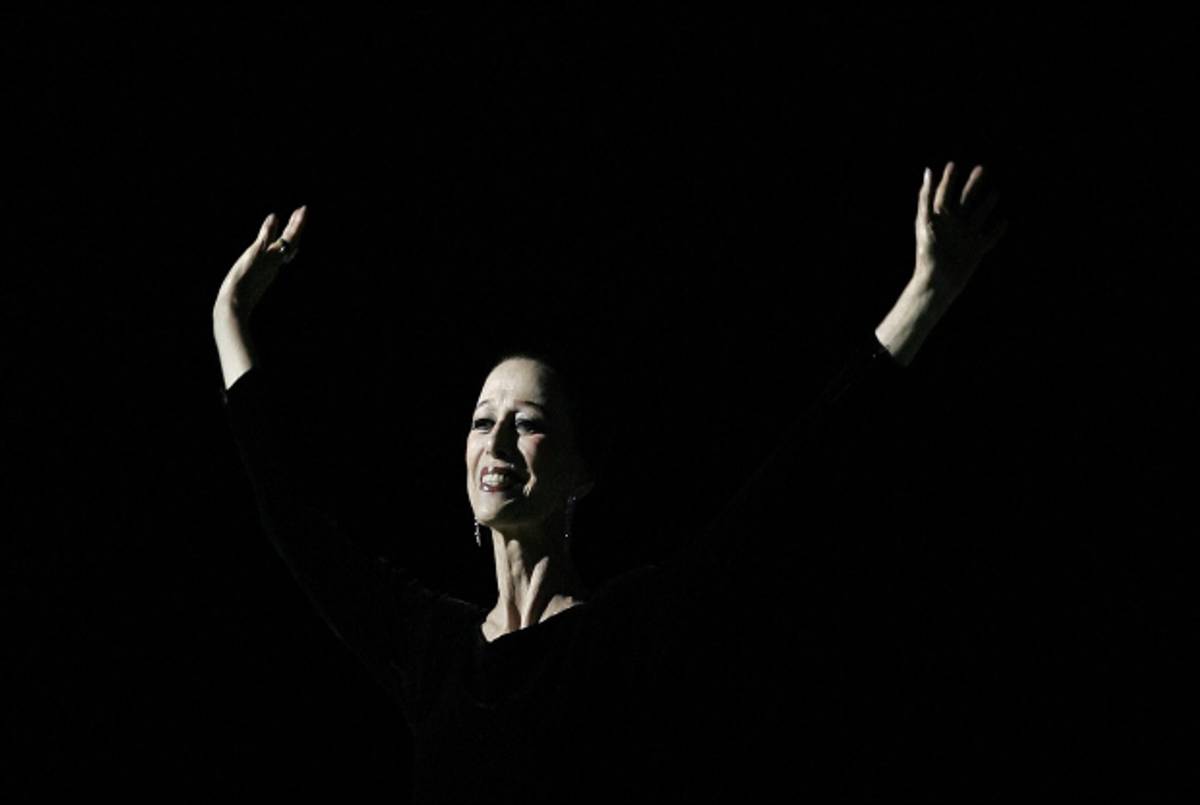
Russian ballerina Maya Plisetskaya, widely considered to be one of the greatest dancers of the 20th century, died on May 2 in Munich. She was 89.
Former Russian Prime Minister Dmitry Medvedev called Plisetskaya (translated from Russian), “a rare combination of artistry, beauty, generosity and dignity.”
Plisetskaya was born on November 20, 1925 in Moscow. She lost her father, a Soviet official, at a young age, and was also separated from her mother for a time as well during her youth (they reunited in 1941). The New York Times writes:
Her mother, Rakhil Messerer, was a silent-film actress. Her father, Mikhail Plisetsky, was a Soviet mining and diplomatic official who was posted to Spitzbergen, Norway, where Ms. Plisetskaya spent part of her childhood.
Her father was shot to death in 1938 in Stalin’s purges. (Ms. Plisetskaya learned the date of his death only in 1989.) Her mother was arrested and sent to a labor camp with her infant son, then exiled to Kazakhstan. Her parents’ ordeals embittered Ms. Plisetskaya, whose enduring anti-Soviet sentiments would border on dissidence in later years.
Plisetskaya was taken in by her uncle and aunt, known as “Mita,” who both taught at the academy at the Bolshoi, the Russian ballet company founded in 1776. Mita took Plisetskaya to the Bolshoi school at eight years old. There she “undertook the grueling whirl of Bolshoi training” during the “grim realities of Stalinist rule,” the Times reports.
“Whichever way I look at my childhood,” Plisetskaya wrote in her 1994 autobiography, “it all revolves around politics and Stalin’s terror.” Plisetskaya joined the Bolshoi ballet company at the age of 18.
In 1959, then in her mid-30s, the Soviet government finally allowed Plisetskaya to make her international debut in the U.S. The Jewish Women’s Archive recounts her subsequent performances, an increasing number of which took place abroad:
In 1959 Plisetskaya danced with the Bolshoi on its first, headline-making tour of the United States. Previously barred from foreign travel because of her family history, she now became an international star. She made several tours with the Bolshoi in the 1960s and 1970s and, unlike any other Soviet dancer of the period, she worked abroad, appearing in ballets choreographed for her by Roland Petit and Maurice Béjart.
In 1967 she produced the Carmen Suite, the first of several collaborations with her husband, the composer Rodion Shchedrin, whom she had married in 1958. The ballet, which challenged Grigorovich’s authority as artistic director, was followed by Anna Karenina (1972). The Seagull (1980) and Lady with a Dog (1985), works staged by Plisetskaya herself, capitalized on her magnetic stage presence and dramatic powers.
In 1960, at the age of 45, Plisetskaya would rise to the title of “Prima Ballerina Assoluta,” a rare honor given to ballerinas. Here is Plisetskaya performing in “Dying Swan” in 1959:
Plisetskaya, who danced into Swan Lake and Carmen into her sixties (she retired as a soloist at 63), continued to perform into her seventies and eighties, The Daily Beast reports:
On her 70th birthday, she debuted in “Ave Maya,” choreographed for her by Maurice Béjart. She danced “Ave Maya” again for her 80th anniversary and at 82 Plisetskaya, still steady on her high heels, once more danced Béjart’s piece at the Cap Roig Gardens festival in Spain.
Related: Moving Pieces
Jonathan Zalman is a writer and teacher based in Brooklyn.